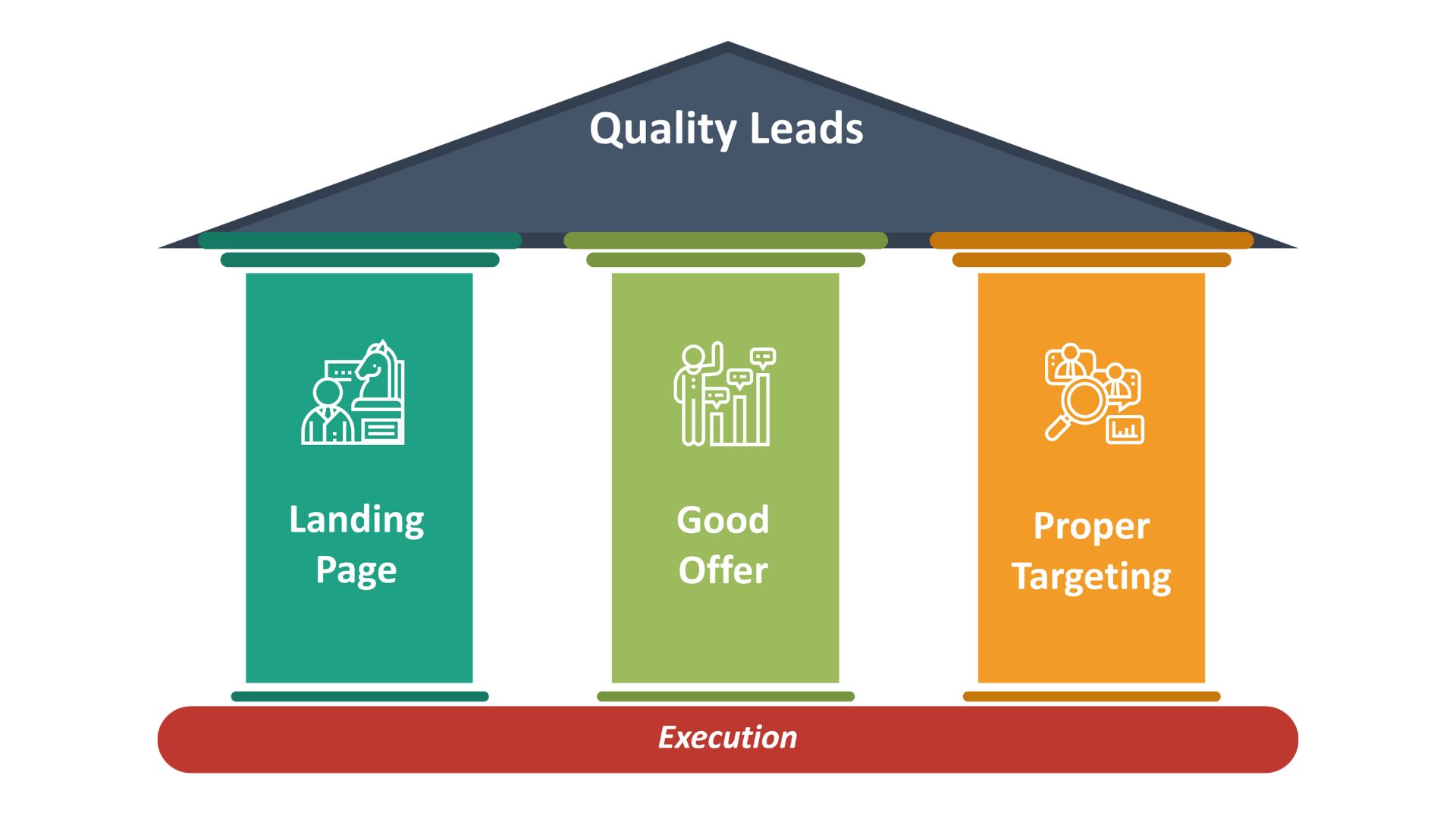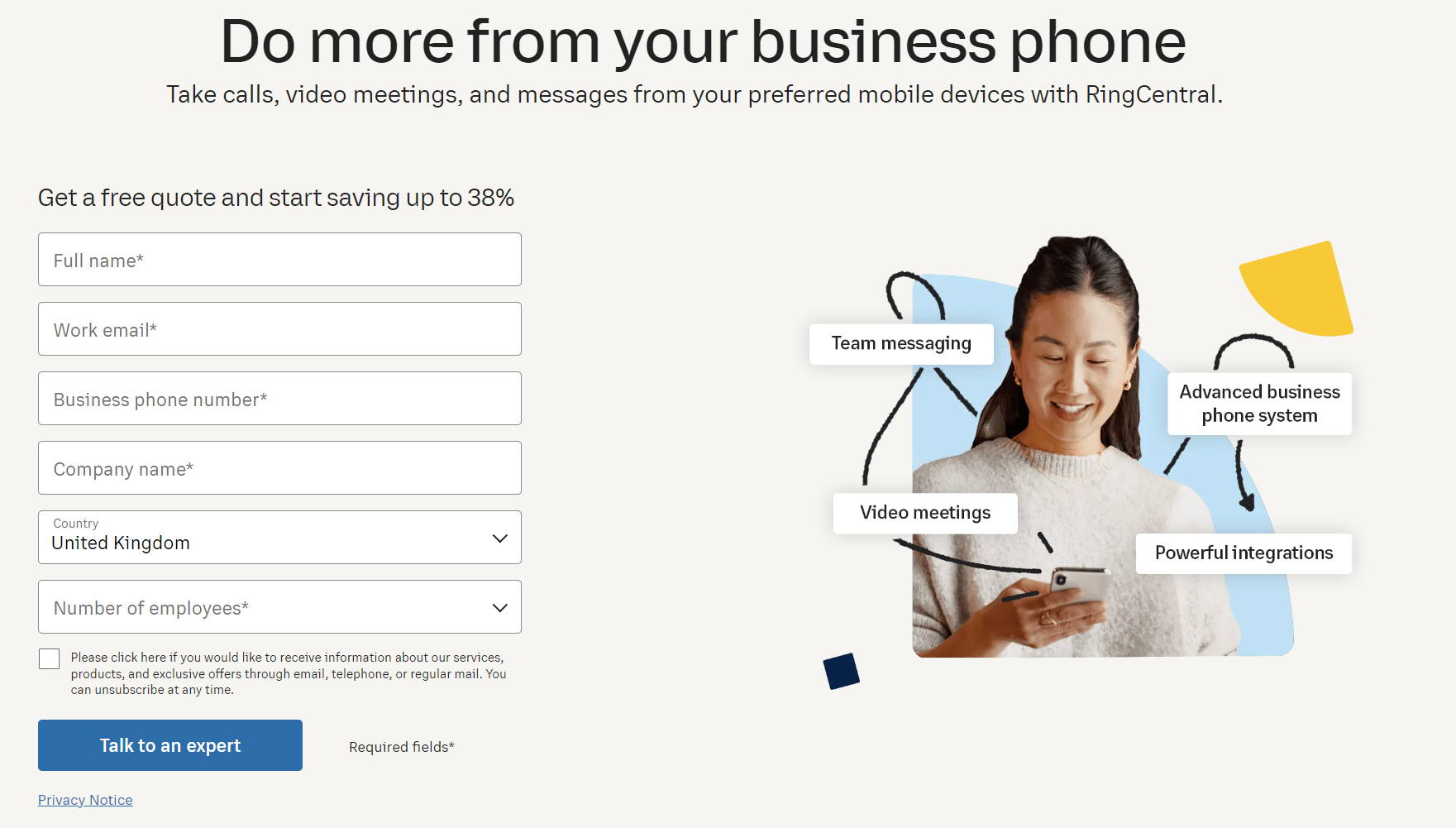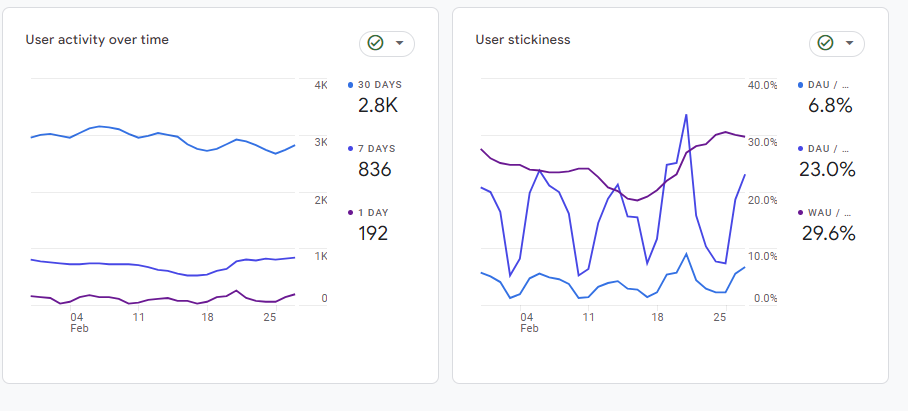
In the rapidly evolving digital arena, mastering B2B lead generation is both an opportunity and a challenge. As we navigate through a landscape where digital advertising spending has soared to an impressive $601.84 billion in 2023 (Oberlo), grasping the nuances of digital marketing becomes imperative for businesses. At the heart of this lies the perfect execution of three critical pillars: targeting, offer, and landing page -essential for any business pondering how to do B2B lead generation effectively.
These pillars not only define the trajectory of your marketing campaigns but also determine the effectiveness of your B2B channel marketing in a crowded and competitive market.
What Are the 3 Pillars for B2B Lead Generation?
Audience Targeting:
Effective targeting is all about reaching the right audience. For B2B lead gen, this means focusing on specific demographics, job titles, and interests. For instance, targeting ‘marketing managers’ or ‘business owners’ on platforms like LinkedIn with ‘SEM’ (Search Engine Marketing) Software’ is more strategic than broader, less relevant groups like people that work in advertising -you may end up reaching HR, finance or graphic designers.
In Google Ads, using targeted keywords such as “SEM Software” or “SEM Tools” is far more effective than less relevant terms like “business tools” or “marketing software”. If you’d like to learn more about understanding this topic, you can read my other post on Understanding Search Intent. It can help you generate more B2B leads with organic traffic and Google Ads.
Offer:
Having a compelling offer, is crucial to generating B2B leads. It needs to be distinctive and persuasive. For example, a SaaS based product like RingCentral must offer tailor-made solutions for businesses, differentiating from the generic service packages like ease of use, 24/7 support and app integration. The offer should resonate with the specific needs of your target audience, showcasing unique methodologies, client testimonials, and case studies.
Landing Page:
The landing page is a critical component in the user’s journey. It needs to visually communicate the offer extremely quickly, be on-brand, and help the user trust the offer and the business. Users take an average of 2.6 seconds to find the area of a website that most influences their first impression
Web designers should fine tune the order of information and address every psychological point that may deter a user from converting. A well-designed landing page should smoothly guide potential clients from initial engagement to conversion with clear messaging and easy navigation.
In B2B Marketing, landing pages usually have a lead gen form and compelling offer in the hero section.

(source: RingCentral)
Examples of Losing B2B Leads Due to Pillars Being Poorly Executed:
Misaligned Targeting:
Imagine a company offering advanced digital marketing courses for professionals. In their LinkedIn campaigns, they mistakenly target a broad age range (25-55 years) without focusing on specific professional fields. This approach leads to their ads being shown to irrelevant LinkedIn users, like accountancy or engineering.
Despite fitting the age criteria, these individuals are unlikely to be interested in marketing courses, resulting in inefficient ad spend and low lead gen conversions rates.
Off-Target Offers:
Consider a payment processing platform like Stripe, renowned for its robust online transaction solutions. The platform decides to launch a new service package designed for small-scale, local businesses. This package offers basic transaction processing capabilities, ideal for small businesses or startups just stepping into the online sales arena. The features are streamlined and user-friendly, targeting those who may find complex payment systems daunting.
However, the platform’s marketing strategy takes a misstep. They launch a LinkedIn advertising campaign targeting large e-commerce companies with 1000+ employees. These companies are already well-versed in digital transactions and require advanced functionalities like multi-currency support, sophisticated fraud detection, and extensive data analytics to handle their high-volume transactions.
The campaign’s message, focusing on the simplicity and basic nature of the new service, fails to resonate with these large enterprises. They perceive the offering as too rudimentary for their complex needs. As a result, the platform’s campaign on LinkedIn leads to a disconnect with this audience, resulting in minimal engagement and poor conversion rates from lead forms.
Ineffective Landing Pages:
Let’s take a unified communications provider for example, looking to generate leads through their landing page with Google Ads. If the page is slow to load and plagued with JavaScript bugs, and has forms that don’t work, users will likely abandon the process (bounce rate) due to frustration.
Additionally, a landing page that is overly wordy without supporting imagery struggles to engage users, who typically have short attention spans. This leads to a lack of engagement with the text and the USP (Unique Selling Proposition) getting lost.
Moreover, if the landing page is not on-brand or lacks trust signals like certifications and testimonials, users might not feel confident doing business with the company. They may instead turn to a competitor they find more trustworthy.
Measuring Each Pillar:

(Source Google Analytics)
Analytics play a pivotal role in assessing the success of your digital marketing strategy. 64% of marketing executives “strongly agree” that data-driven marketing is crucial in today’s landscape.
- Targeting: Assess conversion volume, ad copy combinations, and targeting configuration (keywords and audiences). Also look at the type comments and of enquires you get to see if they line up with your target audience.
- Offer: Conduct competitor research and gather customer feedback to ensure your offer is relevant and unique.
- Landing page: Use tools like Google Analytics and Page Speed Insights to focus on bounce rate, session duration, and conversion rates.
Actionable Steps:
- For targeting: Continuously refine your audience demographics and ad campaign targeting.
- For offer: Stay updated with market trends to ensure your offer remains competitive and relevant.
- For landing page: Regularly conduct A/B testing to optimise your landing page design and content. Monitor your website’s performance metrics to ensure optimal user engagement and conversion rates. A tool like Microsoft Clarity can help with this.
Conclusion
Mastering targeting, offer, and landing page is vital in the journey of how to generate B2B leads. By honing these areas, businesses can significantly enhance their digital marketing strategies and stand out in a market with increasing digital ad spending. Contact us